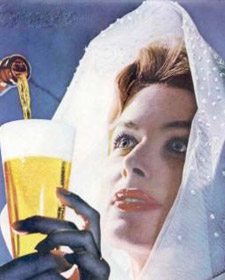 Southern Star Brewing in Texas basically doubled production from 2008 to 2009 and expects to do the same again this year, according to a story last week in the Houston Chronicle.
Southern Star Brewing in Texas basically doubled production from 2008 to 2009 and expects to do the same again this year, according to a story last week in the Houston Chronicle.
Curiously, a the manager at a Houston bar says the founders are smart to grow the brewery “at a slow, deliberate pace.” One hundred percent hardly sounds slow, but obviously he remembers that past performance is no guarantee of future results.
Because of a story (for print) I just finished I happen to have an example at my fingertips.
From 1991 through 1997 the number of brewpubs in the United States increased from 155 to 845 (growing about 5.5 fold). Those pubs brewed 112,154 barrels of beer in 1991 and 691,879 in 1997 (increasing 6.2 times over).
What would have happened had they done the same during the next six years (until 2003) and then again for the next six?
Goodness. There would have been more than 25,000 brewpubs in the country in 2009 brewing 26.5 million barrels. And that was just brewpubs, which produced 12.5 percent of craft beer in 1997 and make a little less than 8 percent today.
We knew that wasn’t going to happen. In fact brewpub production turned flat in 1998 and has remained pretty much the same since. Craft beer sales kept climbing, reaching 9.1 million barrels . . . but who knows when they will hit 26 million?
 Three hops grown in the U.S. Northwest (Chinook, Amarillo and Simcoe), two in the U.K. (Bramling Cross and First Gold) and one from New Zealand.
Three hops grown in the U.S. Northwest (Chinook, Amarillo and Simcoe), two in the U.K. (Bramling Cross and First Gold) and one from New Zealand.